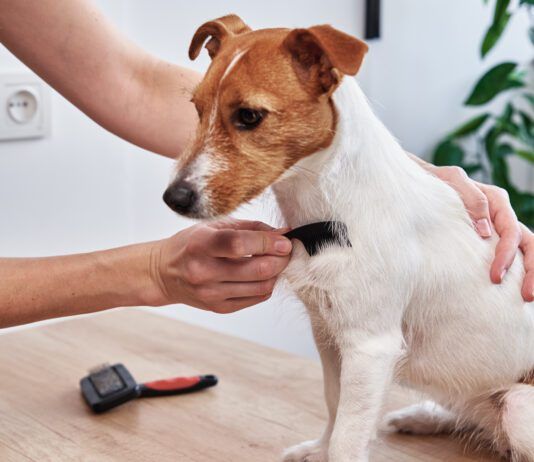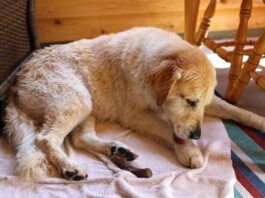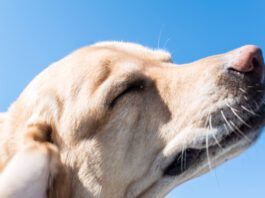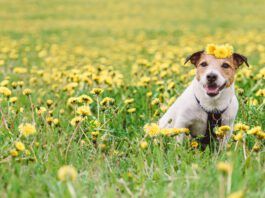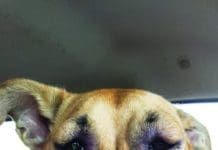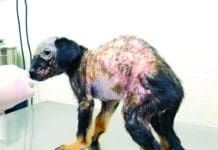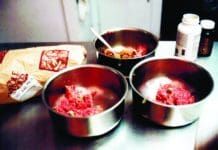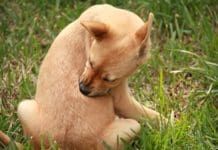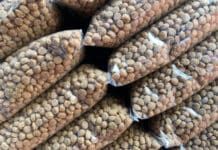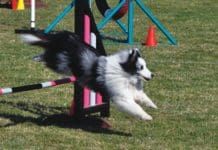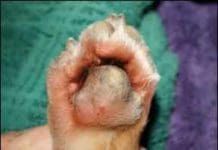Heartworm Prevention for Dogs with Food Allergies
Did you know that there are unflavored monthly heartworm preventative chews?
Tea Tree Oil Diffusers Are Toxic to Dogs
While some essential oils can benefit dogs, others are extremely dangerous - especially when used in their concentrated form. Tea tree oil demands extra caution around dogs, cats and small children. Although exposure to any essential oil is generally most concentrated when it directly contacts skin, tea tree oil diffusers and liquid potpourri present specific health concerns to dogs. These items release essential oils like tea tree continually into the air, risking exposure by inhalation.
Dog Stung By A Bee? Here’s How to Treat It
Hives, wheals, and welts are a moderate reaction to stings. Just like their human counterparts, dogs who have been stung can break out in unsightly hives. These are usually very itchy and uncomfortable. The first sign often noticed is the dog rubbing along furniture or scratching at the face and eyes. The hives may manifest as bright red streaks or lumps all over the body or be confined to a single place.
What is Mange in Dogs?
There may be no other canine malady that seems to inspire as much misinformation as canine mange." Internet searches often return pages that blame it on lice (wrong) as often as mites (right). Ask an older person about it and he may tell you to use a dangerous and ineffective treatment such as dousing the poor dog in used motor oil (a great way to sicken or even kill the dog). But the condition isn't a mystery
What is Hypoallergenic Dog Shampoo?
There are countless so-called hypoallergenic" dog shampoos on the market
Canine Atopic Dermatitis
In late autumn, we closed our pool, an annual event that all four of our swim-loving dogs dread. They will swim as long into the fall season as we allow and I am pretty certain that our Toller, Chippy, would bring out an ice pick and break his way through the ice if he could. In addition to the daily joy, excitement, and happiness that our pool brings to us all, we have found that it has had an additional benefit for some of our dogs. The pool and the daily swims that it provides help to keep itchy dogs from itching all summer long.
Elimination Diet for Dogs: Will it Help Your Allergic Dog?
When your dog itches, you know it. That relentless licking, scratching, chewing anything he can do to relieve the itch. He seems obsessed, and he probably is. Whatever you do, don't ignore this problem (as if you could!). Incessant scratching and chewing may indicate food allergy. He'll constantly tear into any place on his body that he can reach with his teeth or claws. You may see ugly hair loss. Until you find the cause, this problem will go from bad to worse.
Suspect Your Itchy Dog Has a Food Allergy?
If you suspect your dog has a food allergy, follow these steps:
Commercial Dog Food For Allergies
Owners who don't feel capable of or willing to carry out a rigorous trial may prefer to try a commercial dog food that has been processed in such a way as to render the proteins hypoallergenic, or one designed specifically for use in an elimination diet. Chances are good that your veterinarian carries at least one of these types of food. Some are limited-ingredient diets, available over the counter; others are prescription diets. All cost around 30 percent more than even the best nonprescription dog foods.
Dog Food Elimination Trials Are Worth The Effort
Allergies can literally cause a dog to tear his hair out, setting acute moist dermatitis (hot spots") into motion and triggering fits of paw-licking and head-shaking (caused by allergy-induced ear inflammation and infection). When this happens
10 Steps to Healthy Skin and a Silky Coat for Your Dog
All dog lovers appreciate seeing a healthy, happy dog, running in the sun with a glistening coat. And it's great to hear, Wow! Your dog's coat is so soft and shiny. How do you do it?" It's wonderful if you are one of the lucky owners whose dog inspires this sort of spontaneous compliment
Identifying and Treating Skin Conditions that can Affect Your Dog
Yikes! What happened to Fido’s nose? And what’s wrong with Fluffy’s paw pads? The possibilities are many, and a surprising number of nose and paw pad problems are related. Because illnesses in this category often have similar or identical symptoms, a veterinarian’s diagnosis can be important. The following overview will help you identify, prevent, or treat these disorders. The most frequently asked questions about dogs’ noses concern color. Dogs have black or dark noses and paw pads because of melanin, a pigment that darkens skin. When melanin production slows or stops, the skin lightens uniformly or in patches. The term nasodigital refers to both nose and toes. A thickening of the outer layer of skin (hyperkeratosis) at the edges of the nose or paw pads can develop into painful cracks, fissures, erosions, and ulcers.


